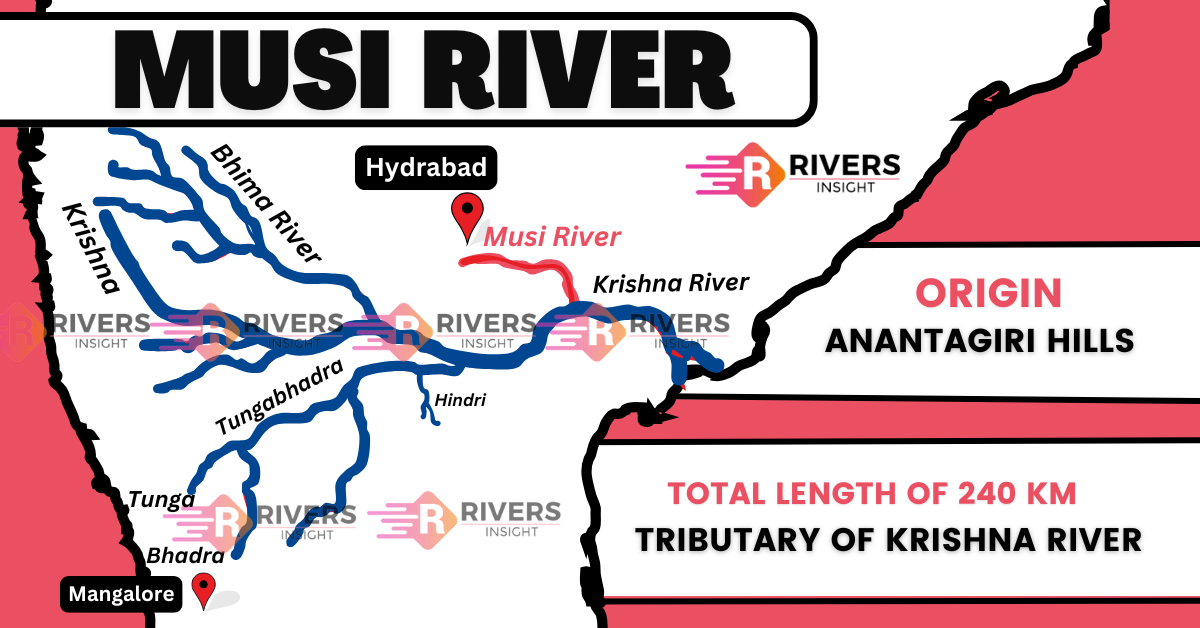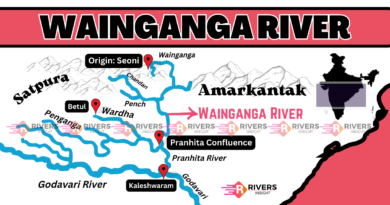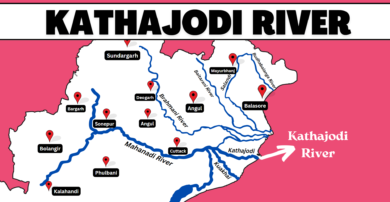Musi River: Origin, Course, & Map
The Musi River, also known as Muchukunda or Musunuru, is a significant tributary of the Krishna River. It flows through the Telangana region in southern India, particularly impacting the city of Hyderabad, where it divides the city into the historic Old City and the modern metropolis.
Table of Contents
| 🔍 Quick Facts | ℹ️ Details |
|---|---|
| River Name | Musi River (aka Muchukunda, Musunuru) |
| Origin | Anantagiri Hills, Vikarabad, Telangana |
| Confluence | Krishna River at Wazirabad, Nalgonda |
| Length | ~240 km |
| Major Dams | Himayat Sagar, Osman Sagar |
| City on its Bank | Hyderabad |
| Global Recognition | World Monuments Watch 2025 |
Origin and Course of the Musi River
Musi River originates in the Anantagiri Hills of Vikarabad district, located about 90 kilometers west of Hyderabad, Telangana.
Course Details:
- Source Location: Anantagiri Hills, Vikarabad, Telangana
- The river is formed by the merging of two small rivulets:
- Esi (8 km)
- Musa (13 km)
- After originating, the Musi River flows in an eastward direction, cutting through the heart of Hyderabad city, where it historically divided the Old City from the New City.
- The river then continues its journey through the southern Telangana plains, passing through parts of Rangareddy and Nalgonda districts.
- Confluence: The Musi ultimately joins the Krishna River near Wazirabad in Nalgonda district.
The river’s total length is approximately 240 kilometers, and its basin plays a significant role in Telangana’s urban development, irrigation, and heritage landscape.
Dams Across the Musi River
1. Osman Sagar
- Built in 1920 after the 1908 Hyderabad floods.
- Acts as a major source of drinking water for Hyderabad.
- Also supports irrigation and flood control.
2. Himayat Sagar
- Constructed in 1927.
- Forms another essential reservoir contributing to Hyderabad’s water supply.
3. Mir Alam Tank
- Built in 1806, predating both Osman and Himayat Sagar.
- Historically supplied water to the city and remains a landmark.
💡 Did You Know?
- The river flows past Charminar, Purana Pul, and Afzal Gunj, making it a heritage corridor.
- The 1908 flood in Musi River killed over 15,000 people.
- The Musi River used to be drinkable until the late 1960s!
- Hyderabad was once called the “City of Lakes and Rivers” due to Musi and its reservoirs.
Role in Hyderabad
- Acts as a geographical divide between the Old City (Charminar, Laad Bazaar) and the New City (Secunderabad, Banjara Hills).
- Once served as Hyderabad’s primary water source and irrigation support.
- Several historic bridges and mosques line its banks, reflecting Qutb Shahi and Nizam-era architecture.
Musi Riverfront Development Project
The Musi Riverfront Development Corporation (MRDCL), under the Telangana Government, is revitalizing a 55-kilometer stretch of the river with a ₹6,000 crore budget.
Key Initiatives:
- Construction of 39 STPs (Sewage Treatment Plants) to clean the river.
- Development of check dams and eco-friendly embankments.
- Urban river parks, walking paths, and tourism infrastructure.
| 🏛️ Govt. Reference: Musi Riverfront Official Website – MRDCL
Heritage Spotlight: World Monuments Watch 2025
In 2025, the Musi River Historic Buildings in Hyderabad were listed in the World Monuments Watch, a prestigious global advocacy program by the World Monuments Fund (WMF).
About WMF:
- Based in New York, it highlights cultural heritage sites facing threats from climate change, urbanization, or conflict.
- The inclusion of Musi reflects concerns over water pollution, encroachment, and neglect of architectural heritage along the riverbanks.
🔗 Learn more at World Monuments Fund
“Musi River has been the cultural spine of Hyderabad — restoring it restores our identity.”
— Heritage Telangana, Dept. of Culture




